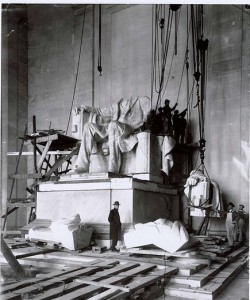 Washington D.C is more than just a city, it is more than just the capital of one country, it is more than the center of the federal government. Washington D.C in one way or another, is the center of the entire world. Everybody in the world looks at what Washington D.C is doing, what policies are being created here, what architecture is being built here, how the people are living, and most importantly how this relatively young capital got shaped by its recent history.
Washington D.C is more than just a city, it is more than just the capital of one country, it is more than the center of the federal government. Washington D.C in one way or another, is the center of the entire world. Everybody in the world looks at what Washington D.C is doing, what policies are being created here, what architecture is being built here, how the people are living, and most importantly how this relatively young capital got shaped by its recent history.
one of the interesting topics to discuss about Washington DC is how this great capital, which is the center of the federal government, and several law forcing agencies, has a crime rate so high compared to other cities. Does the city not have enough law men to protect its residents? or is Washington DC not considered a residential area anymore? even though most residential areas have been pushed away from the center of D.C, specifically the national mall, the city is still flooded daily by civilians, from tourists, to local people, to people trying to get their work done with the agencies located in DC, so law enforcement has to be taken seriously, and we have been seeing an increase in law enforcement.
Crime rate brings us up to another interesting topic, does the history of DC that includes battles between federal government and local governments, and people supporting the laws of the federal government and people opposing them, play a role in increasing the crime rate here in DC? is it because the people that are living here are perhaps used to solving their disagreements in a violent way? that is an interesting topic to research a little bit more.
let us go back a little bit in history, around the time that slavery was being discussed widely and movements to end slavery was being established and empowered. How does a city like washington DC, which is supposed to be the unified center of the entire nation, react? where does it stand on such a hot topic? Would it want to stand with one faction of the people against the others? or would that stand dissolve this nation? Looking back at history, when Abraham Lincoln proposed the abolition of slavery, the nation was indeed facing a split that would have ended the united states, but instead, with the formation of the union army, which its main goal was to keep the nation unified, they fought the confederates army which called for separation, and when the union army emerged victorious after 4 bloody years that left more than half a million soldiers dead, the nation was preserved.
last but not least, i would like to discuss how the monumental movement has a lot to do with the beautification of Washington D.C. When you ask a lot of people, what do you think of when you hear Washington D.C, they almost spontaneously answer by: ” the national monuments.” The national monuments give the city of Washington D.C a different aspect that none of the major american cities have, in which those monuments mark specific important events in the history of our nation. the Washington monument for example, remind us of our first elected president. Dr. Martin Luther king’s statue, exemplifies the city’s civil movements. The Lincoln memorial is a beautiful memory of our great standards that was set long ago. and much much more.
Washington D.C is a young city compared to other nations who have existed long time ago, but D.C has a history so deep that makes it a point of interest to a lot of people.


